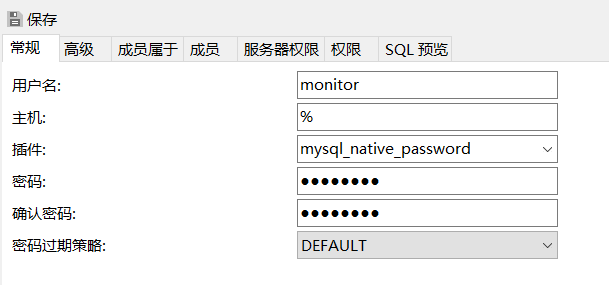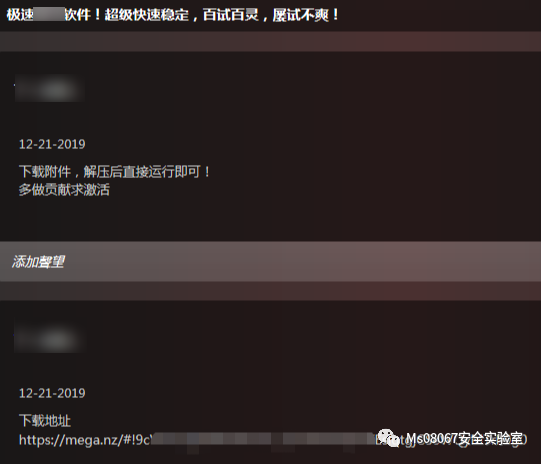可以将文章内容翻译成中文,广告屏蔽插件可能会导致该功能失效(如失效,请关闭广告屏蔽插件后再试):
问题:
I got the opposite issue from here.
By default in iOS7, back swipe gesture of UINavigationController's stack could pop the presented ViewController. Now I just uniformed all the self.navigationItem.leftBarButtonItem style for all the ViewControllers.
Here is the code:
self.navigationItem.leftBarButtonItem = [[UIBarButtonItem alloc] initWithImage:LOADIMAGE(@"back_button") style:UIBarButtonItemStylePlain target:self action:@selector(popCurrentViewController)];
after that, the navigationController.interactivePopGestureRecognizer is disabled. How could I make the pop gesture enabled without removing the custom leftBarButtonItem?
Thanks!
回答1:
First set delegate in viewDidLoad:
self.navigationController.interactivePopGestureRecognizer.delegate = self;
And then disable gesture when pushing:
- (void)pushViewController:(UIViewController *)viewController animated:(BOOL)animated {
[super pushViewController:viewController animated:animated];
self.interactivePopGestureRecognizer.enabled = NO;
}
And enable in viewDidDisappear:
self.navigationController.interactivePopGestureRecognizer.enabled = YES;
回答2:
It works for me when I set the delegate
self.navigationController.interactivePopGestureRecognizer.delegate = self;
and then implement
- (BOOL)gestureRecognizer:(UIGestureRecognizer *)gestureRecognizer shouldBeRequiredToFailByGestureRecognizer:(UIGestureRecognizer *)otherGestureRecognizer
{
return YES;
}
回答3:
it works for me Swift 3:
func gestureRecognizer(_ gestureRecognizer: UIGestureRecognizer, shouldBeRequiredToFailBy otherGestureRecognizer: UIGestureRecognizer) -> Bool {
return true
}
and in ViewDidLoad:
self.navigationController?.interactivePopGestureRecognizer?.delegate = self
self.navigationController?.interactivePopGestureRecognizer?.isEnabled = true
回答4:
You need to handle two scenarios:
- When you're pushing a new view onto the stack
- When you're showing the root view controller
If you just need a base class you can use, here's a Swift 3 version:
import UIKit
final class SwipeNavigationController: UINavigationController {
// MARK: - Lifecycle
override init(rootViewController: UIViewController) {
super.init(rootViewController: rootViewController)
}
override init(nibName nibNameOrNil: String?, bundle nibBundleOrNil: Bundle?) {
super.init(nibName: nibNameOrNil, bundle: nibBundleOrNil)
delegate = self
}
required init?(coder aDecoder: NSCoder) {
super.init(coder: aDecoder)
delegate = self
}
override func viewDidLoad() {
super.viewDidLoad()
// This needs to be in here, not in init
interactivePopGestureRecognizer?.delegate = self
}
deinit {
delegate = nil
interactivePopGestureRecognizer?.delegate = nil
}
// MARK: - Overrides
override func pushViewController(_ viewController: UIViewController, animated: Bool) {
duringPushAnimation = true
super.pushViewController(viewController, animated: animated)
}
// MARK: - Private Properties
fileprivate var duringPushAnimation = false
}
// MARK: - UINavigationControllerDelegate
extension SwipeNavigationController: UINavigationControllerDelegate {
func navigationController(_ navigationController: UINavigationController, didShow viewController: UIViewController, animated: Bool) {
guard let swipeNavigationController = navigationController as? SwipeNavigationController else { return }
swipeNavigationController.duringPushAnimation = false
}
}
// MARK: - UIGestureRecognizerDelegate
extension SwipeNavigationController: UIGestureRecognizerDelegate {
func gestureRecognizerShouldBegin(_ gestureRecognizer: UIGestureRecognizer) -> Bool {
guard gestureRecognizer == interactivePopGestureRecognizer else {
return true // default value
}
// Disable pop gesture in two situations:
// 1) when the pop animation is in progress
// 2) when user swipes quickly a couple of times and animations don't have time to be performed
return viewControllers.count > 1 && duringPushAnimation == false
}
}
If you end up needing to act as a UINavigationControllerDelegate in another class, you can write a delegate forwarder similar to this answer.
Adapted from source in Objective-C: https://github.com/fastred/AHKNavigationController
回答5:
This is the best way to enable/ disable swipe to pop view controller in iOS 10, Swift 3 :
For First Screen [ Where you want to Disable Swipe gesture ] :
class SignUpViewController : UIViewController,UIGestureRecognizerDelegate {
//MARK: - View initializers
override func viewDidLoad() {
super.viewDidLoad()
}
override func viewWillAppear(_ animated: Bool) {
super.viewWillAppear(animated)
swipeToPop()
}
override func viewWillDisappear(_ animated: Bool) {
super.viewWillDisappear(animated)
}
override func didReceiveMemoryWarning() {
super.didReceiveMemoryWarning()
}
func swipeToPop() {
self.navigationController?.interactivePopGestureRecognizer?.isEnabled = true;
self.navigationController?.interactivePopGestureRecognizer?.delegate = self;
}
func gestureRecognizerShouldBegin(_ gestureRecognizer: UIGestureRecognizer) -> Bool {
if gestureRecognizer == self.navigationController?.interactivePopGestureRecognizer {
return false
}
return true
} }
For middle screen [ Where you want to Enable Swipe gesture ] :
class FriendListViewController : UIViewController {
//MARK: - View initializers
override func viewDidLoad() {
super.viewDidLoad()
swipeToPop()
}
func swipeToPop() {
self.navigationController?.interactivePopGestureRecognizer?.isEnabled = true;
self.navigationController?.interactivePopGestureRecognizer?.delegate = nil;
} }
回答6:
Swift 3:
override func viewWillAppear(_ animated: Bool) {
super.viewWillAppear(animated)
self.navigationController?.interactivePopGestureRecognizer?.delegate = self
}
func gestureRecognizer(_ gestureRecognizer: UIGestureRecognizer, shouldRecognizeSimultaneouslyWith otherGestureRecognizer: UIGestureRecognizer) -> Bool {
return true
}
func gestureRecognizer(_ gestureRecognizer: UIGestureRecognizer, shouldRequireFailureOf otherGestureRecognizer: UIGestureRecognizer) -> Bool {
return (otherGestureRecognizer is UIScreenEdgePanGestureRecognizer)
}
回答7:
Setting a custom back button disable the swipe back feature.
The best thing to do to keep it is to subclass UINavigationViewController and set itself as the interactivePopGestureRecognizer delegate; then you can return YES from gestureRecognizerShouldBegin to allow the swipe back.
For example, this is done in AHKNavigationController
And a Swift version here: https://stackoverflow.com/a/43433530/308315
回答8:
This answer, but with storyboard support.
class SwipeNavigationController: UINavigationController {
// MARK: - Lifecycle
override init(rootViewController: UIViewController) {
super.init(rootViewController: rootViewController)
}
override init(nibName nibNameOrNil: String?, bundle nibBundleOrNil: Bundle?) {
super.init(nibName: nibNameOrNil, bundle: nibBundleOrNil)
self.setup()
}
required init?(coder aDecoder: NSCoder) {
super.init(coder: aDecoder)
self.setup()
}
private func setup() {
delegate = self
}
override func viewDidLoad() {
super.viewDidLoad()
// This needs to be in here, not in init
interactivePopGestureRecognizer?.delegate = self
}
deinit {
delegate = nil
interactivePopGestureRecognizer?.delegate = nil
}
// MARK: - Overrides
override func pushViewController(_ viewController: UIViewController, animated: Bool) {
duringPushAnimation = true
super.pushViewController(viewController, animated: animated)
}
// MARK: - Private Properties
fileprivate var duringPushAnimation = false
}
回答9:
For those who are still having trouble with this, try separating the two lines as below.
override func viewDidLoad() {
self.navigationController!.interactivePopGestureRecognizer!.delegate = self
...
override func viewWillAppear(_ animated: Bool) {
self.navigationController!.interactivePopGestureRecognizer!.isEnabled = true
...
Obviously, in my app,
interactivePopGestureRecognizer!.isEnabled
got reset to false before the view was shown for some reason.





